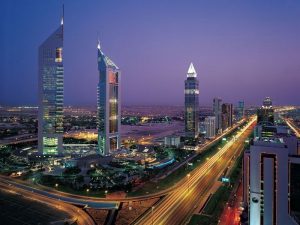 The last time the Dubai property market ceased rising was in the fall of 2008. The reason was the financial crisis which spread across the world and limited liquidity. Investors are now wondering whether history will now repeat itself. This is quite logical given that China and the US Federal Reserve plan to revise their loose and extraordinary monetary policies, which will lead to tightening of the global liquidity and decrease in stock prices.
The last time the Dubai property market ceased rising was in the fall of 2008. The reason was the financial crisis which spread across the world and limited liquidity. Investors are now wondering whether history will now repeat itself. This is quite logical given that China and the US Federal Reserve plan to revise their loose and extraordinary monetary policies, which will lead to tightening of the global liquidity and decrease in stock prices.
Believing that slowdown will not happen this time is an upbeat and optimistic approach, that may not be very well-grounded. Dubai property market’ prices for villas, in particular, now are equal to those seen in the 2008 peak period. In the same time, rents in the centrally positioned city’s districts are now at 2011 and sliding in the past month due to a huge supply.
It is a well-known fact that the summer season is not particularly good when it comes to real estate sales. In addition, the rising prices continue to lure an increasing number of sellers to the market. Meanwhile, the stock market in the emirate saw an increase of 36.95% in 2013.
Asset prices in the city surpassed everyone’s expectations, receiving world’s biggest gains on the stock and housing market in a relatively short period of time. This means that price correction is due. However, there are two possible paths, in which correction may unfold. The first possible, with a few-months life span, will offer investors a brief chance to buy for good value. However, there is also a possibility the unfolding correction to mark the beginning of a new more serious property price slump and long-term property prices decrease.
As a matter of fact, rental and property price correction already began. In some areas of the Dubai, such as the Downtown Dubai, Dubai Marina and the Arabian Ranches, rents are decreasing along the number of transactions. Too many already older properties listed for sale added to a tremendous new supply constantly released by property developers and hurried launches of new projects, unfortunately do not indicate lack of availability and rising demand.
Elsewhere in Dubai, the signs of economic recovery are evident. The tourism, trade and transportation sectors of the emirate are thriving, while the global positive trend continues to stay rather modest. Also, the city became an attractive destination for those able to escape the Arab Spring events in the MENA region. The number of newly arrived residents in the UAE rises on the hour. Fresh civil unrest in Egypt and Turkey will prompt even more people to consider immigration.
The availability of credit with relatively low interest rates is another beneficial factor for Dubai property market. As long as the interests rates remain relatively low and new jobs are being created, homebuyers will be present in the market.
The demand for real estate in the region is not likely to decrease given that the civil unrest in a number of Arab countries aggravates and spreads over more areas. As a result, the United Arab Emirates is still seen as a safe haven not only for the people, but also for their capitals.
However, if the 2007-2008 financial crisis scenario repeats on the global financial markets, the local stock markets will also witness a deterioration, as they function as a proxy to the U.S. markets. The already reduced inflow of hot money will stop, in parts to cover obligations on other markets and only retail investors will remain in the market, while the liquidity will be limited.
A big factor in the strengthening of the Dubai property market in the second half of 2013 will play the news about Dubai Expo 2020. If the city wins the bid, it is very much likely property prices to remain relatively stable. However, in the event of not winning the the bid, Dubai property prices are poised for a fall. The freshly launched new projects in 2013 will only add to the massive supply already available and scheduled for release in the coming years.

































